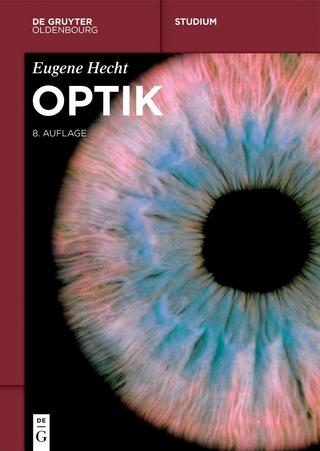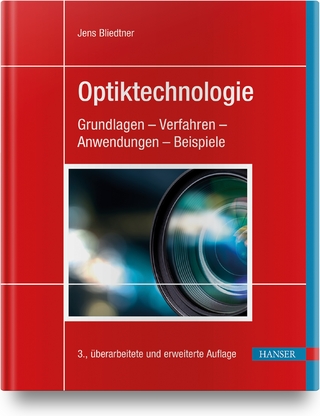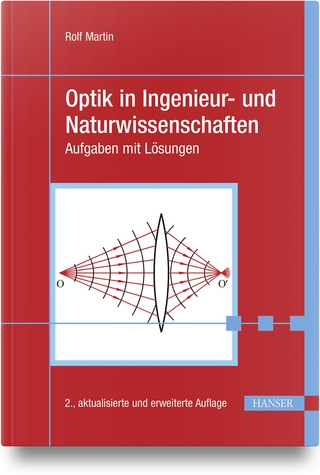
Optical Detection Theory for Laser Applications
Wiley-Interscience (Verlag)
978-0-471-22411-2 (ISBN)
A comprehensive treatment of the fundamentals of optical detection theory
Laser system applications are becoming more numerous, particularly in the fields of communications and remote sensing. Filling a significant gap in the literature, Optical Detection Theory for Laser Applications addresses the theoretical aspects of optical detection and associated phenomenologies, describing the fundamental optical, statistical, and mathematical principles of the modern laser system.
The book is especially valuable for its extensive treatment of direct detection statistics, which has no analog in radar detection theory and which has never before been compiled in a cohesive manner in a single book. Coverage includes:
* A review of mathematical statistics and statistical decision theory
* Performance of truncated and untruncated coherent and direct detection systems using Huygens-Fresnel and Gaussian beam theories
* Rough surface scatter and atmospheric propagation effects
* Single-pulse detection statistics for direct and coherent detection systems
* Multi-pulse detection statistics for direct and coherent detection systems
Supported by additional comments providing further insights into the physics or mathematics discussed and an extensive list of classic references, Optical Detection Theory for Laser Applications comprises a much-needed reference for the professional scientist or engineer, as well as a solid textbook for advanced students.
GREGORY R. OSCHE, PhD, received a doctorate in physics from the Polytechnic Institute of Brooklyn in 1975. For the past twenty-three years, he has specialized in the field of electro-optic systems development at Raytheon Company where he has functioned as Systems Engineering Manager, Multisensor Systems Manager, and technical director on a variety of military laser radar and multisensor programs. He currently holds the position of Engineering Fellow within the Air and Missile Defense Business Unit of Raytheon Electronic Systems. Dr. Osche has published over thirty technical papers in fields ranging from elementary quantum theory to optical detection theory. He is a Senior Member of the IEEE, a member of the Optical Society of America and of the American Physical Society.
Preface.
Chapter 1. Introduction and Background.
1.1. Overview of Laser Systems.
1.2. Review of Statistical Methods.
1.3. Decision-Making Processes.
1.4. Optical Detection Techniques.
References.
Chapter 2. Signal and Noise Analysis.
2.1. Introduction.
2.2. Review of Diffraction Theory.
2.3. Free-Space Propagation.
2.4. Truncated and Obscured Gaussian Beams.
2.5. Fourier Optics and the Array Theorem.
2.6. Antenna and Mixing Theorems.
2.7. Analysis of Coherent Detection Systems.
2.8. Analysis of Direct-Detection Systems.
2.9. Receiver and Clutter Noise.
2.10. Power Signal-to-Noise-Ratio.
References.
Chapter 3. Random Processes in Beam Propagation.
3.1. Introduction.
3.2. Review of Optical Coherence Theory.
3.3. Surface Scattering.
3.4. Propagation through Turbulent Media.
References.
Chapter 4. Single-Pulse Direct-Detection Statistics.
4.1. Introduction.
4.2. Single-Point Statistics of Fully Developed Speckle.
4.3. Summed Statistics of Fully Developed Speckle.
4.4. Poisson Signal in Poisson Noise.
4.5. Negative Binomial Signal in Poisson Noise.
4.6. Noncentral Negative Binomial Signal in Poisson Noise.
4.7. Parabolic-Cylinder Signal in Gaussian Noise.
4.8. Detection of Signals in APD Excess Noise.
4.9. Detection in Atmospheric Turbulence.
4.10. Detection in Atmospheric Clutter.
4.11. Polarization Diversity.
4.12. Multiple Uncorrelated Signals.
References.
Chapter 5. Single-Pulse Coherent Detection Statistics.
5.1. Introduction.
5.2. Constant-Amplitude Signal in Gaussian Noise.
5.3. Rayleigh Fluctuating Signal in Gaussian Noise.
5.4. One-Dominant-Plus-Rayleigh Signal in Gaussian Noise.
5.5. Rician Signal in Gaussian Noise.
5.6. Detection in Atmospheric Turbulence.
5.7. Coherent versus Noncoherent Performance.
References.
Chapter 6. Multiple-Pulse Detection.
6.1. Introduction.
6.2. Direct-Detection Systems.
6.3. Coherent Detection Systems.
6.4. Binary Integration.
References.
Appendix A. Advanced Mathematical Functions.
A.1. Dirac Delta and Unit Step Functions.
A.2. Gamma Function.
A.3. Confluent Hypergeometric Function.
A.4. Parabolic Cylinder Functions.
A.5. Toronto Function.
References.
Appendix B. Additional Derivations.
B.1. Gamma Distribution.
B.2. Burgess Variance Theorem.
References.
Index.
| Erscheint lt. Verlag | 23.8.2002 |
|---|---|
| Reihe/Serie | Wiley Series in Pure and Applied Optics |
| Sprache | englisch |
| Maße | 162 x 240 mm |
| Gewicht | 717 g |
| Themenwelt | Naturwissenschaften ► Physik / Astronomie ► Optik |
| Technik ► Elektrotechnik / Energietechnik | |
| ISBN-10 | 0-471-22411-1 / 0471224111 |
| ISBN-13 | 978-0-471-22411-2 / 9780471224112 |
| Zustand | Neuware |
| Informationen gemäß Produktsicherheitsverordnung (GPSR) | |
| Haben Sie eine Frage zum Produkt? |
aus dem Bereich


